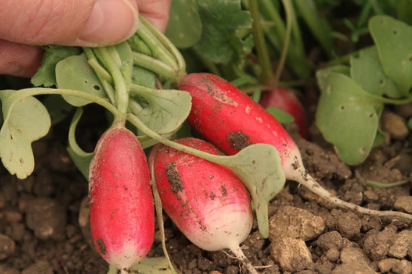
Radishes are a popular vegetable to grow in home gardens due to their fast growth and versatility in culinary applications.
While most gardeners are familiar with harvesting radish roots, harvesting radish seeds is a lesser-known aspect of radish cultivation.
Radish seeds are not only great for replanting but can also be used in various culinary endeavors.
However, determining the right time to harvest radish seeds can be a bit tricky for beginners.
In this blog post, we will explore the art of radish seed harvesting, including when to harvest, signs of seed maturity, and the process of collecting and storing radish seeds.
Radish Seed Development

Before we delve into the timing of radish seed harvesting, it’s crucial to understand the life cycle of a radish plant and how seeds develop.
Radishes are fast-growing cool-season crops that typically take around 22 to 70 days to mature, depending on the variety.
As the radish plant matures, it produces a long flower stalk that eventually leads to the development of seed pods. These seed pods contain radish seeds that can be harvested once they reach full maturity.
Determining the Optimal Time to Harvest Radish Seeds

The timing of radish seed harvest is crucial to ensure seed quality and viability. Harvesting too early may result in immature seeds that fail to germinate, while waiting too long may lead to seeds being scattered by the wind or insects. To determine the optimal time for seed harvest, there are several visual and tactile cues you can look out for:
Pod Color
As radish seeds mature, the seed pods change color. Initially, the pods are green, but as they approach maturity, they turn brown or yellow. This color change is a clear indication that the seeds inside are ready for harvest.
Pod Drying
In addition to color change, the seed pods should begin to dry out. When touched, mature pods will feel crisp and brittle rather than soft or pliable. Avoid harvesting seeds from pods that are still green and fleshy.
Seed Rattling
Another sign of seed maturity is the rattling sound produced when you gently shake the seed pods. If you hear a distinct rattling noise, it signifies that the seeds have detached from the pod walls and are ready for collection.
Plant Aging
Observing the overall appearance of the radish plant can also give you a clue about seed maturity. As the plant nears the end of its life cycle, with leaves yellowing or wilting, it indicates that the seeds are likely to mature.
Harvesting and Storing Radish Seeds

Once you have determined that your radish seeds are mature, it’s time to harvest and store them properly to maintain their quality for future use. Follow these steps for a successful seed harvest:
Gather the necessary tools
Before you begin, gather a pair of scissors or pruners, a container to collect the seed pods, and paper bags or envelopes for drying and storing the seeds.
Harvesting the seed pods
Carefully cut the seed pods from the radish plant, ensuring you don’t damage the pods or drop any seeds. Place the harvested seed pods in your container, being mindful not to overcrowd them.
Drying the seed pods
Transfer the seed pods to a dry and well-ventilated area, away from direct sunlight. Spread them out on a clean surface, such as a table or tray, allowing air to circulate around them. This drying process may take several weeks, during which the pods will continue to dry and the seeds will separate further from the pod walls.
Seed extraction
Once the seed pods are completely dry, gently crush them using your hands or a rolling pin. This helps release the seeds from the pods. Next, separate the seeds from the chaff by winnowing or blowing lightly on them. This process allows the heavier seeds to fall while the lighter chaff is blown away.
Seed cleaning
To remove any remaining chaff or debris, you can use a fine-mesh sieve or screen. Gently shake the seeds through the sieve, ensuring that only clean seeds pass through.
Storing the seeds
Store the cleaned seeds in paper bags or envelopes, making sure to label them with the variety and harvest date. Place the labeled containers in a cool, dry, and dark location, such as a pantry or refrigerator. Proper storage conditions help maintain seed viability for a longer period.
Conclusion
Harvesting radish seeds is a rewarding endeavor for home gardeners, allowing for future plantings and culinary adventures.
The signs of seed maturity and following the proper harvesting and storage techniques can ensure the successful collection of radish seeds.
Remember to observe changes in pod color, drying and rattling of pods, and the aging of the plant itself to determine the ideal time for harvest.
With patience and care, you can enjoy a bountiful supply of radish seeds, enriching your gardening experiences year after year.







